Polygon Characteristics -> altitude
Altitude in Geometry
In geometry, the term "altitude" refers to the perpendicular distance from a vertex of a triangle to the side opposite that vertex. This concept is commonly used in the study of triangles and is important for understanding the properties and measurements of different types of triangles.
Types of Altitudes:
There are three types of altitudes in a triangle:
- Perpendicular Altitude: This is the most commonly used type of altitude, and it is drawn from a vertex to the opposite side at a right angle.
- Oblique Altitude: This type of altitude is drawn from a vertex to the line containing the opposite side, but not necessarily at a right angle.
- Exterior Altitude: This altitude is drawn from a vertex of the triangle to the extension of the line containing the opposite side.
Properties of Altitudes:
Some key properties of altitudes in a triangle include:
- Altitudes always intersect the opposite side of the triangle.
- The point of intersection of the altitudes (known as the orthocenter) can lie inside, outside, or on the triangle depending on the type of triangle (acute, obtuse, or right).
- The product of the lengths of the two segments of the altitude is equal to the area of the triangle.
Study Guide for Altitudes:
If you're studying altitudes in geometry, here are some key points to remember:
- Understand the definitions of the different types of altitudes.
- Practice identifying and drawing altitudes in triangles.
- Explore the properties and relationships of altitudes with the sides and angles of triangles.
- Solve problems involving the lengths and intersections of altitudes in various types of triangles.
- Use the concept of altitudes to calculate the area of triangles.
By mastering the concept of altitudes in geometry, you'll have a solid foundation for understanding the properties and measurements of triangles, as well as their applications in real-world situations.
[Altitude] Related Worksheets and Study Guides:
.◂Math Worksheets and Study Guides Fifth Grade. Polygon Characteristics
Study Guide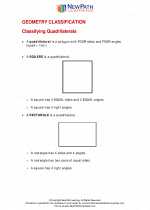 Polygon Characteristics
Polygon Characteristics  Worksheet/Answer key
Worksheet/Answer key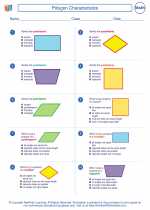 Polygon Characteristics
Polygon Characteristics  Worksheet/Answer key
Worksheet/Answer key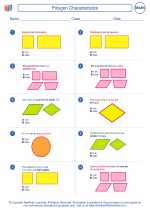 Polygon Characteristics
Polygon Characteristics  Worksheet/Answer key
Worksheet/Answer key Polygon Characteristics
Polygon Characteristics  Worksheet/Answer key
Worksheet/Answer key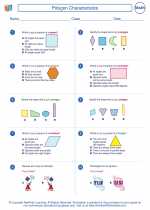 Polygon Characteristics
Polygon Characteristics  Worksheet/Answer key
Worksheet/Answer key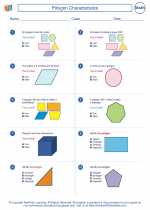 Polygon Characteristics
Polygon Characteristics  Worksheet/Answer key
Worksheet/Answer key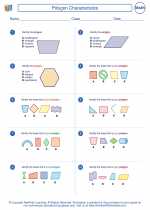 Polygon Characteristics
Polygon Characteristics  Worksheet/Answer key
Worksheet/Answer key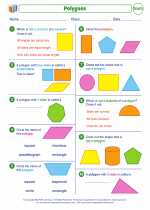 Polygons
Polygons  Worksheet/Answer key
Worksheet/Answer key Shape Up
Shape Up  Vocabulary/Answer key
Vocabulary/Answer key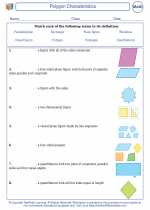 Polygon Characteristics
Polygon Characteristics 

 Worksheet/Answer key
Worksheet/Answer key
 Worksheet/Answer key
Worksheet/Answer key
 Worksheet/Answer key
Worksheet/Answer key
 Worksheet/Answer key
Worksheet/Answer key
 Worksheet/Answer key
Worksheet/Answer key
 Worksheet/Answer key
Worksheet/Answer key
 Worksheet/Answer key
Worksheet/Answer key
 Worksheet/Answer key
Worksheet/Answer key
 Vocabulary/Answer key
Vocabulary/Answer key

The resources above cover the following skills:
Geometry (NCTM)
Analyze characteristics and properties of two- and three-dimensional geometric shapes and develop mathematical arguments about geometric relationships.
Identify, compare, and analyze attributes of two- and three-dimensional shapes and develop vocabulary to describe the attributes.
Classify two- and three-dimensional shapes according to their properties and develop definitions of classes of shapes such as triangles and pyramids.